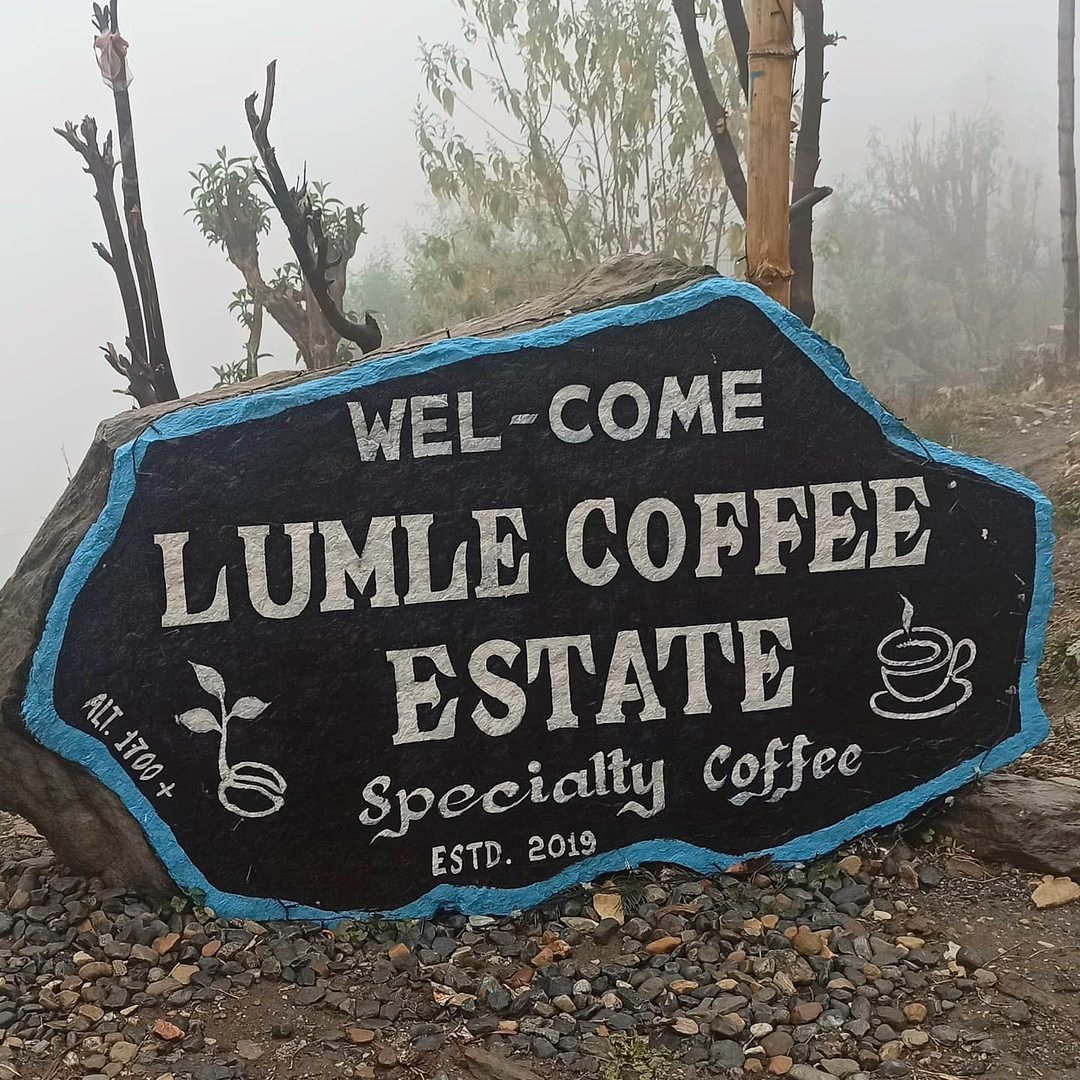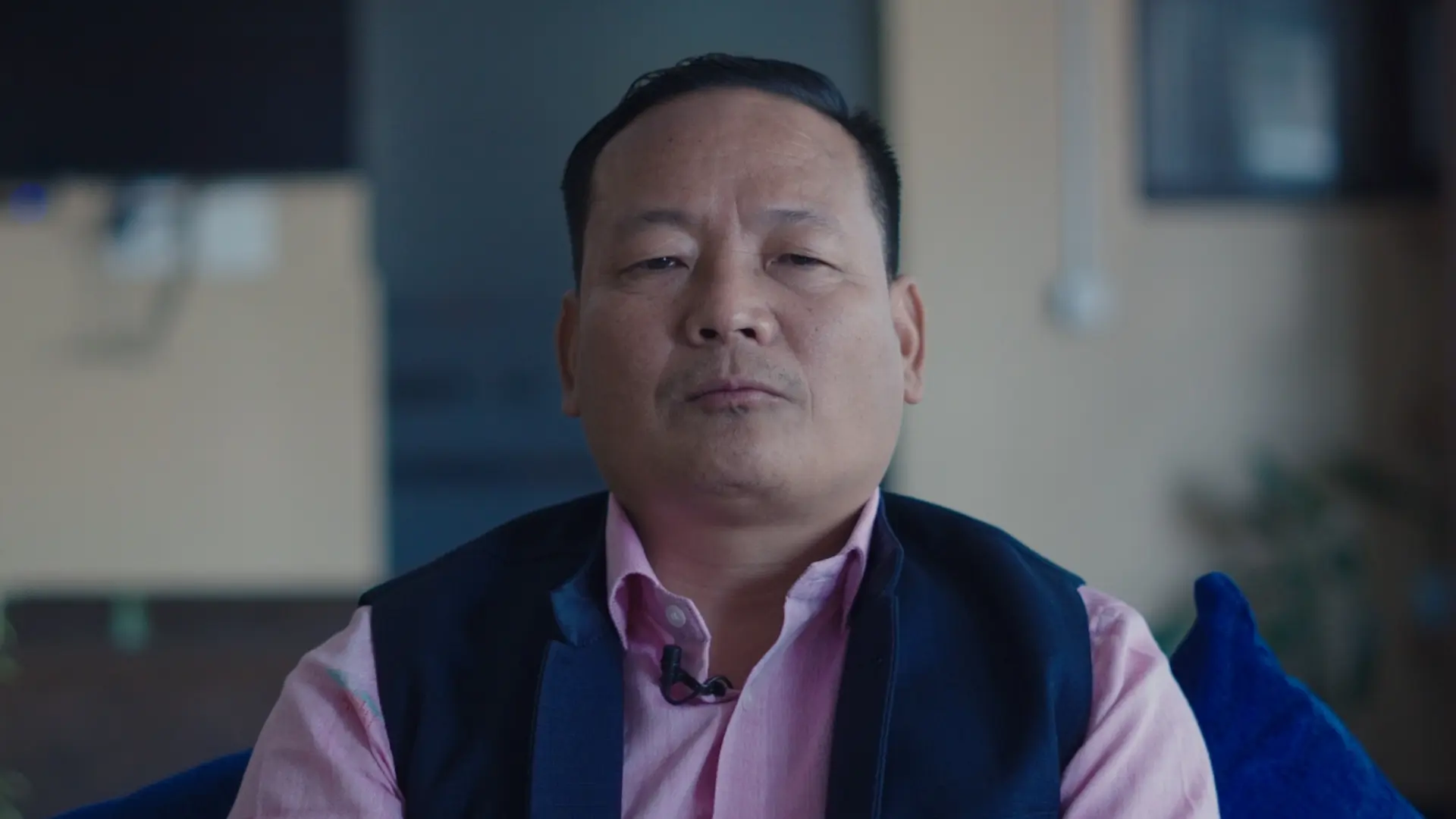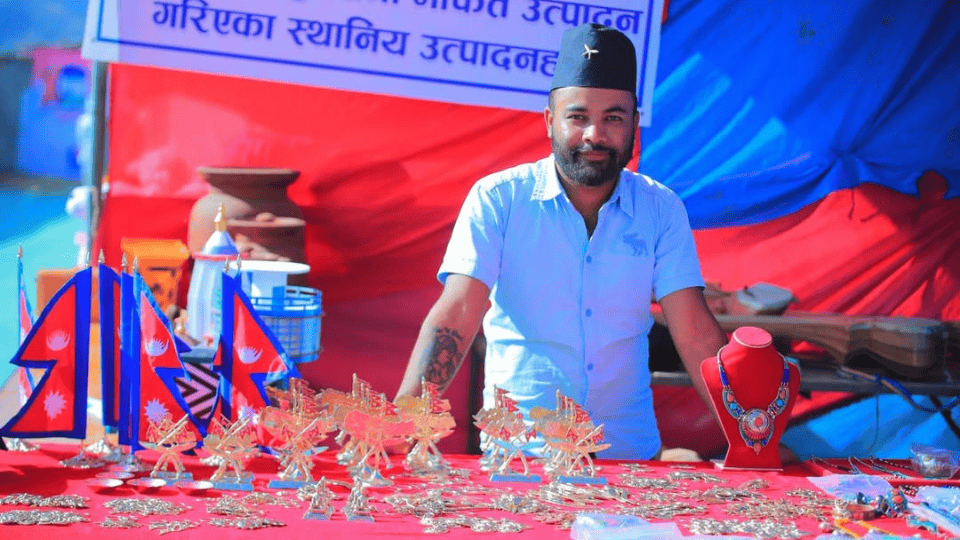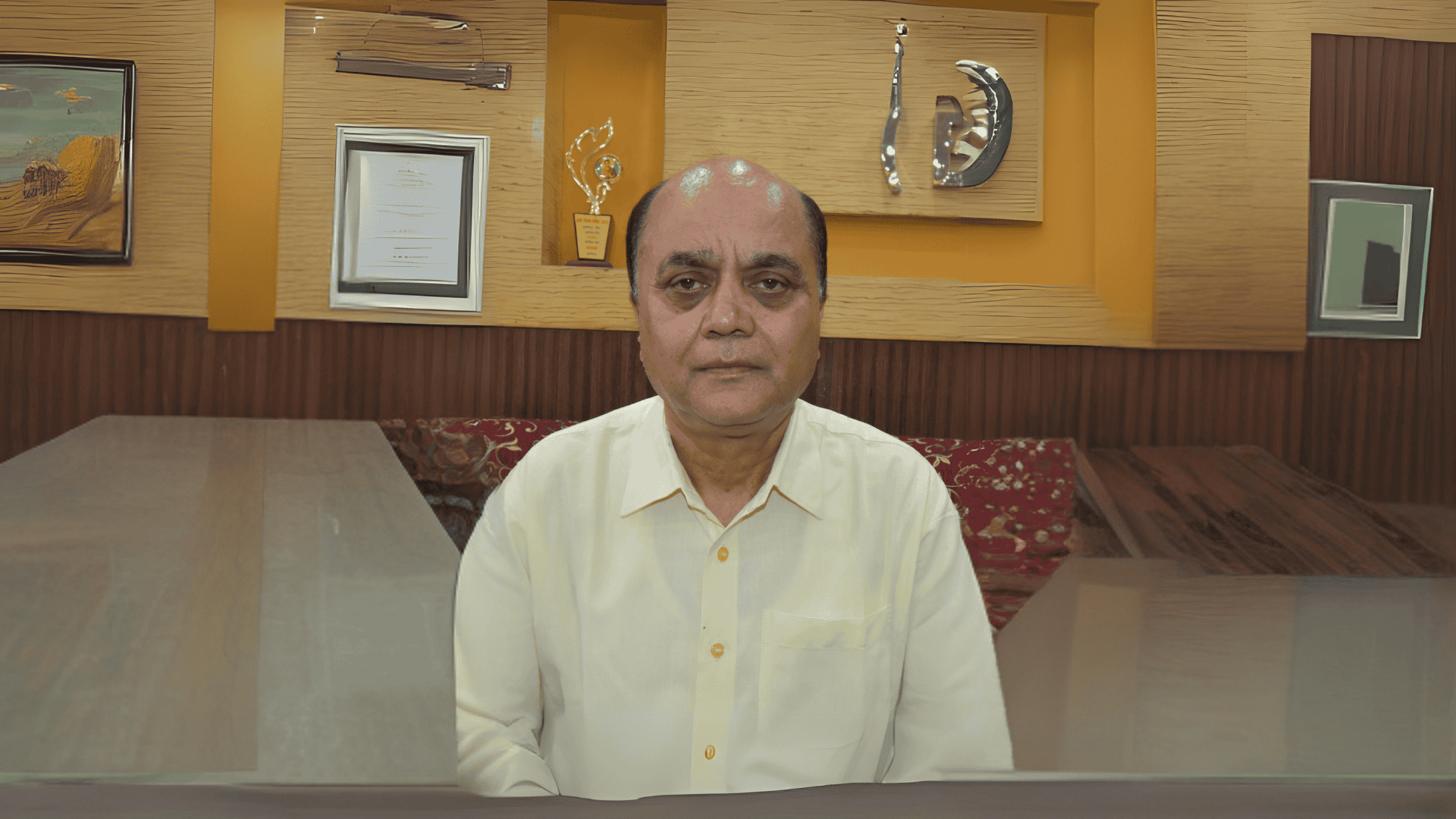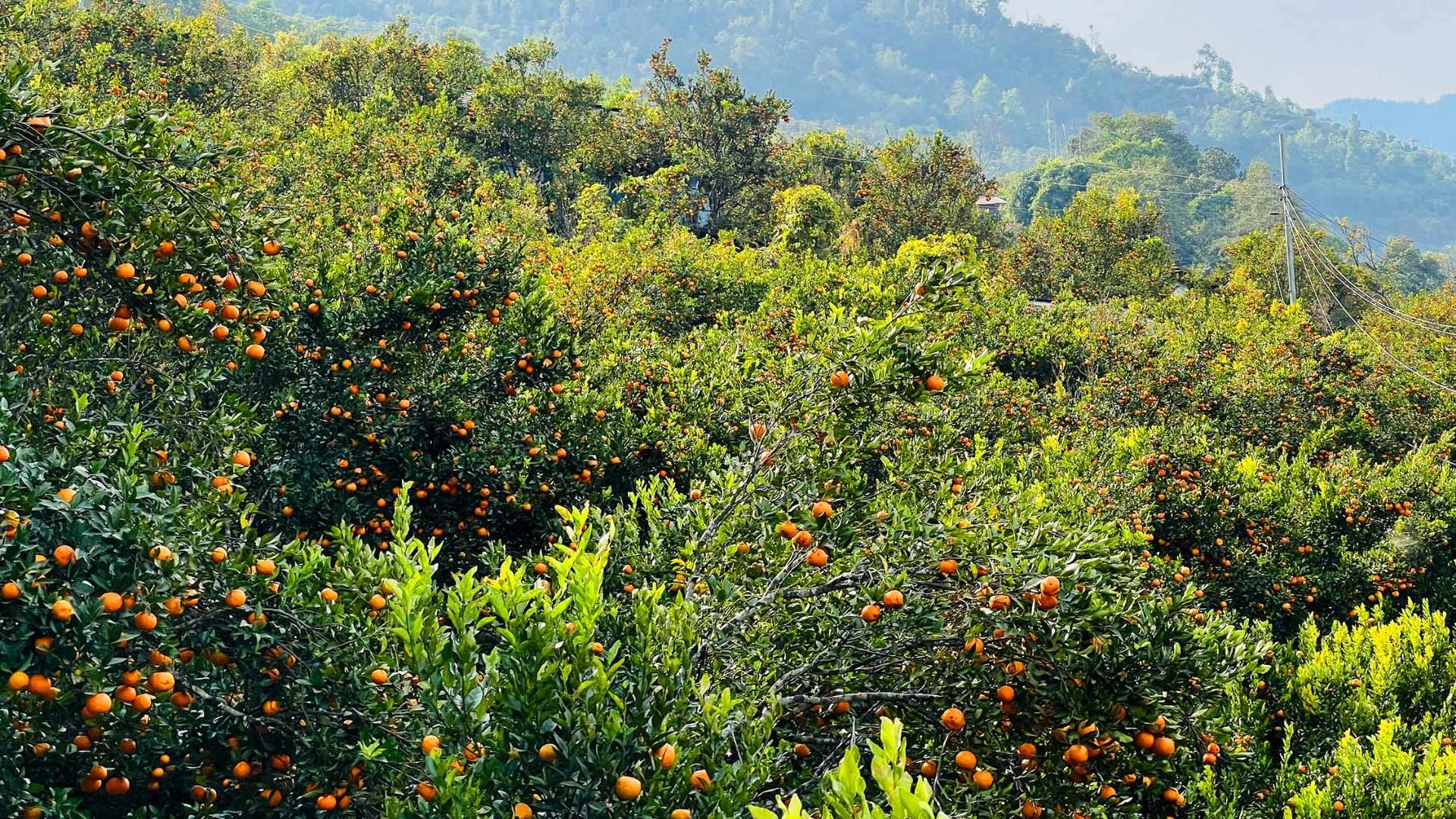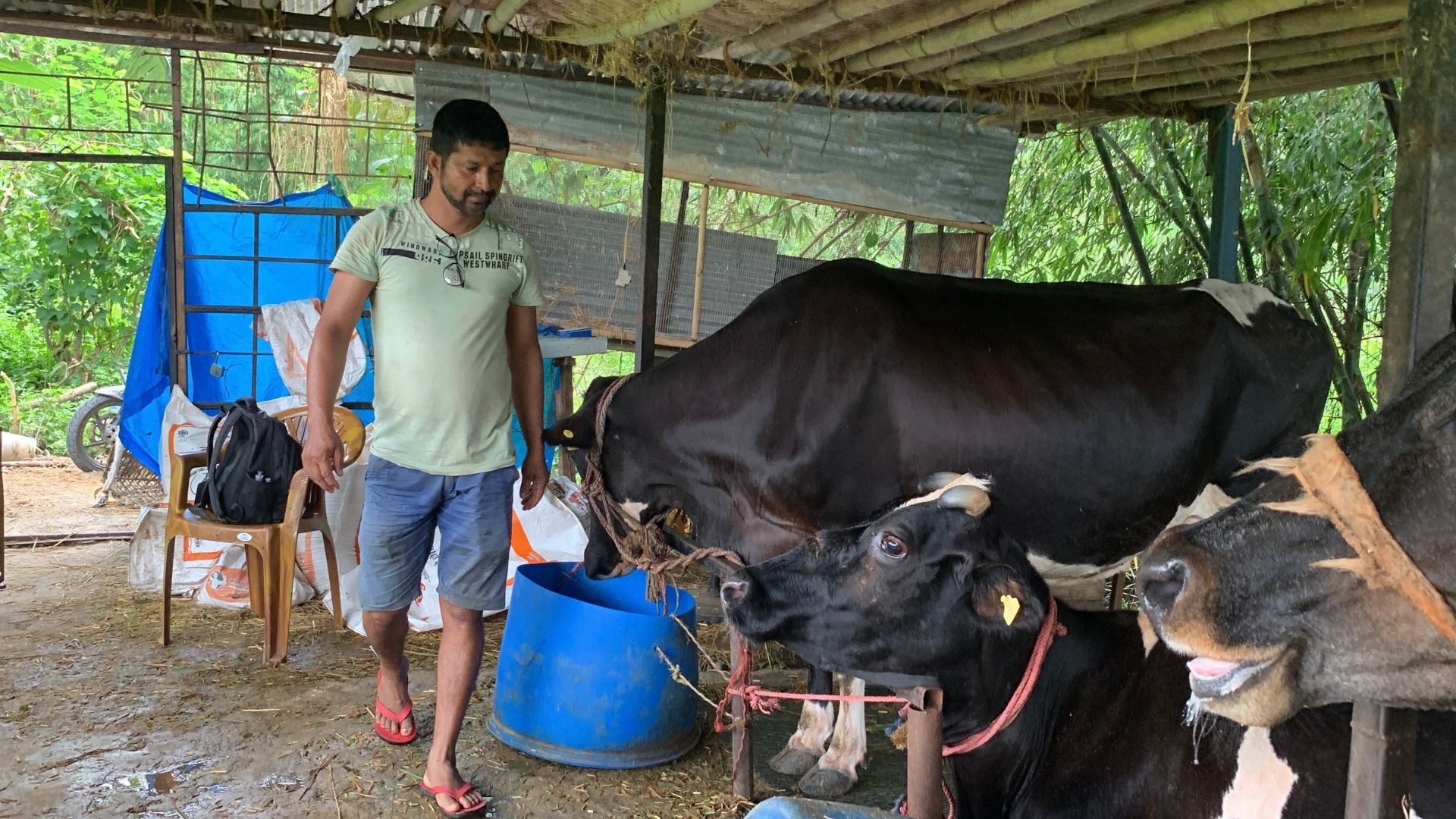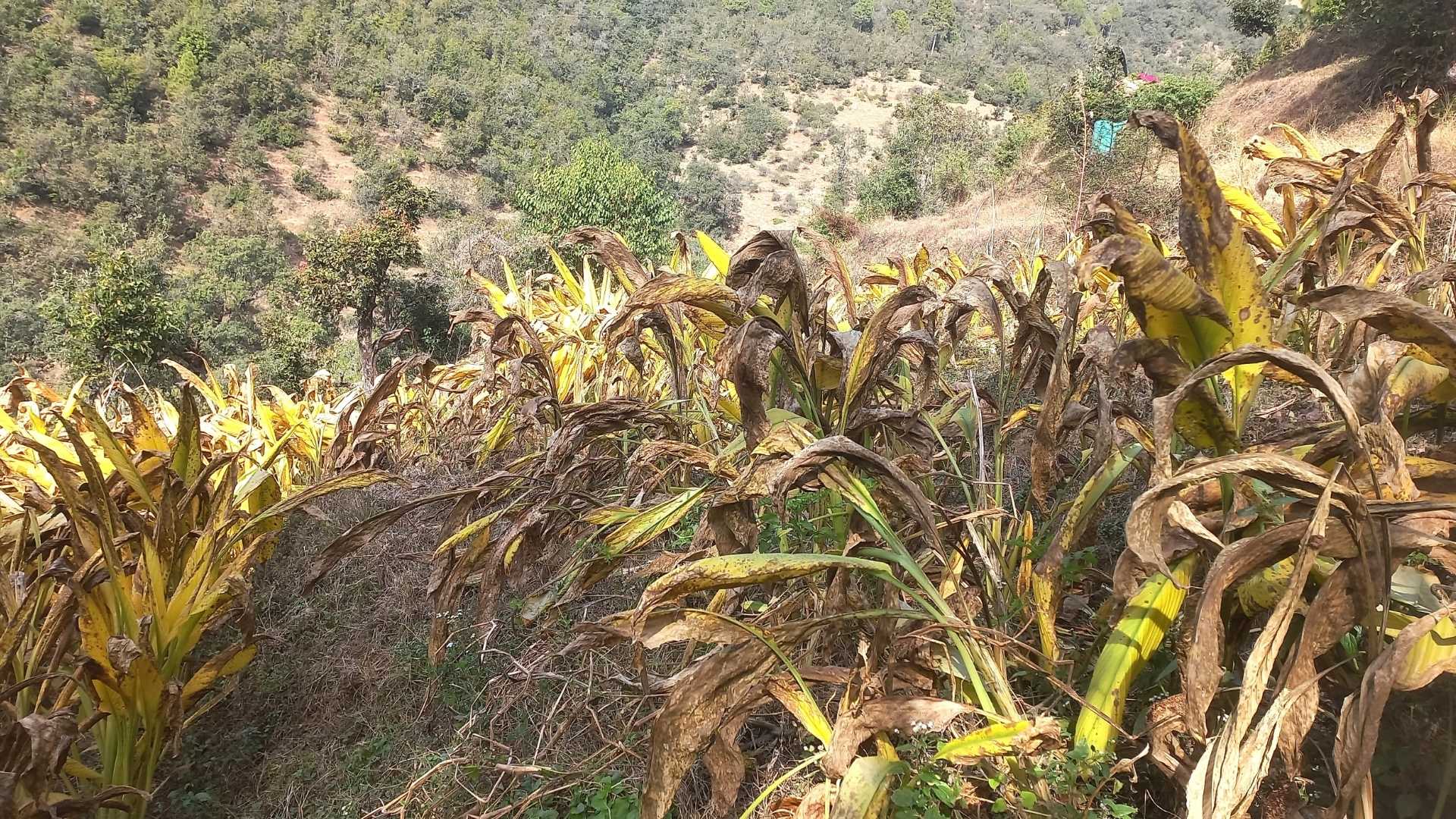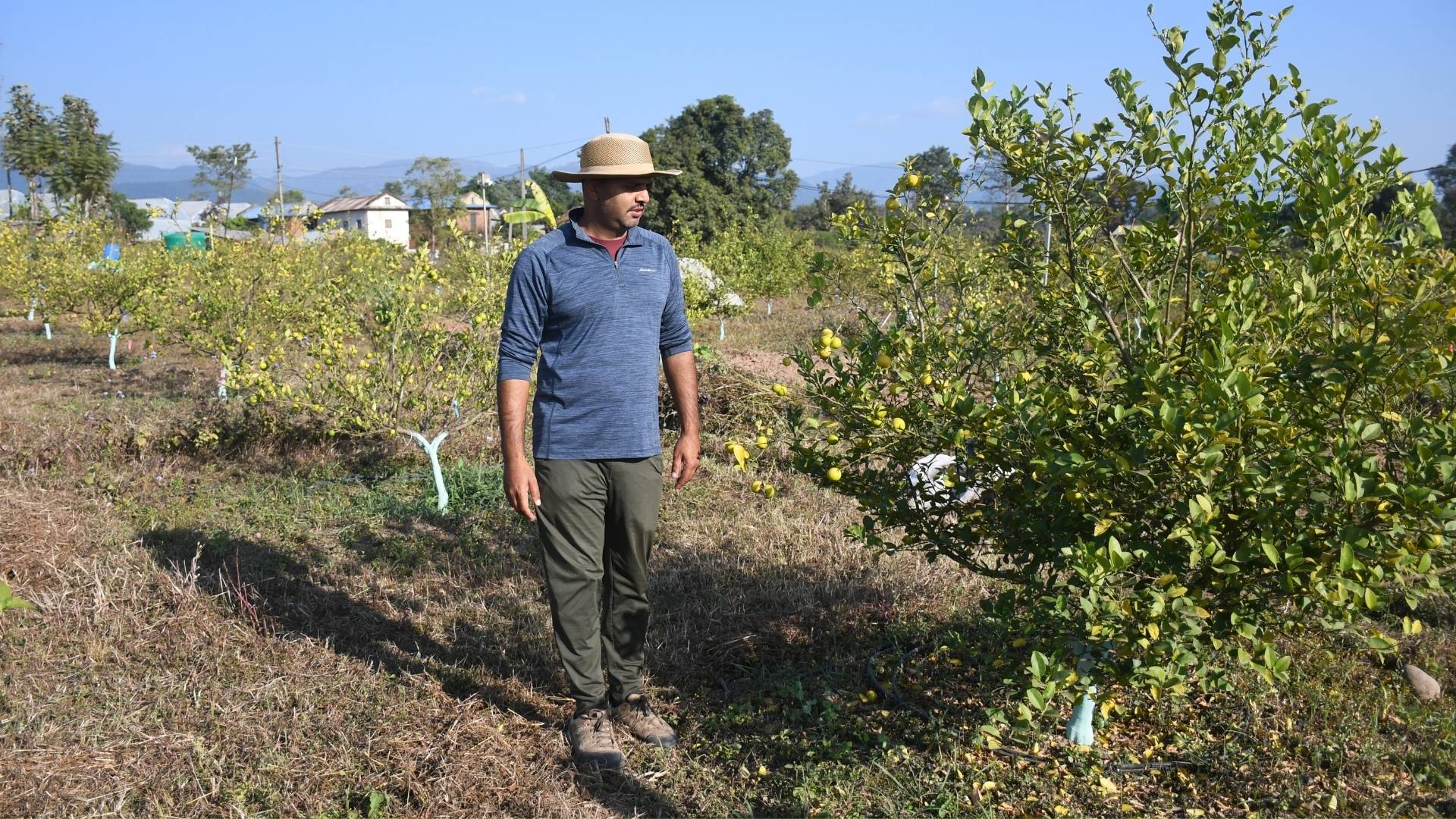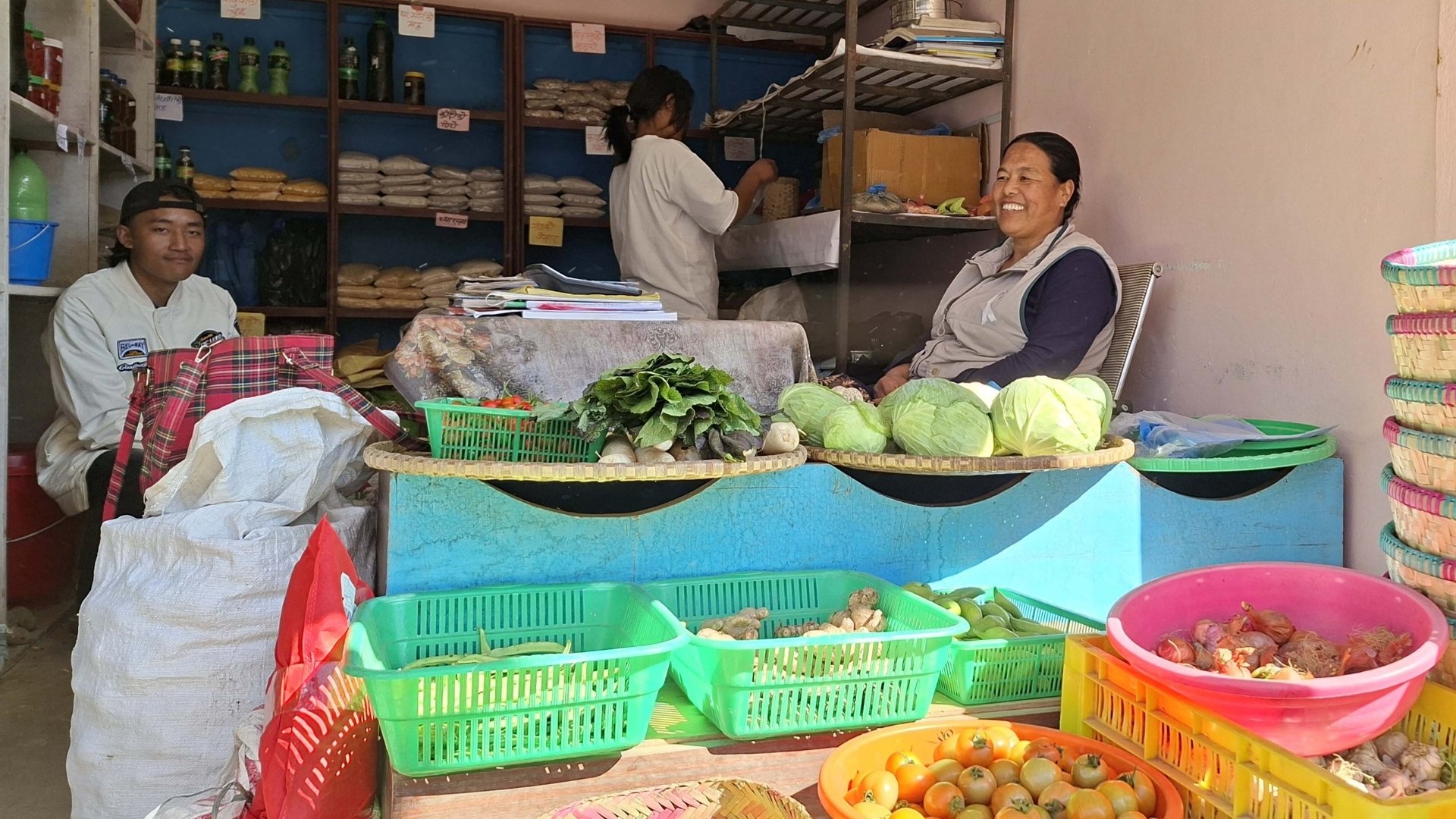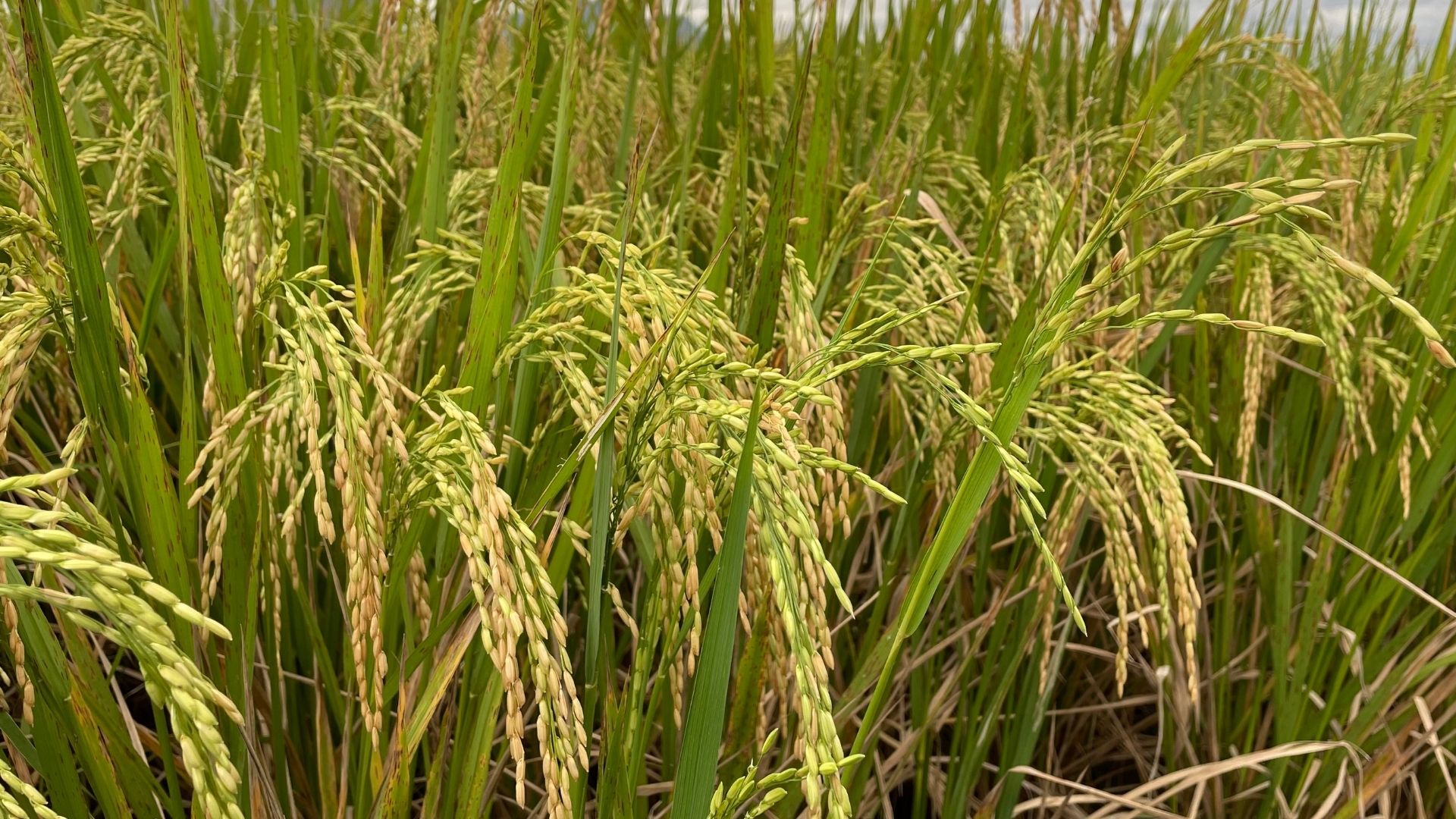A farmer-entrepreneur Nabin Devkota finds his true calling in the journey of coffee farming where he not only educates farmers on coffee beans but also coffee lovers on brewing methods
Some 45 minutes drive away from the hustle-bustle of Pokhara, adjacent right to a single lane roadside along the Pokhara-Baglung Highway, a distinct and neatly packed coffee joint awaits travellers and coffee lovers.
Next to the joint is a modest family-run coffee farm—Lumle Coffee Estate—waiting for its first harvest.
The man behind this entrepreneurial journey is Nabin Devkota, who is supported by his mother Durga Devi Devkota currently overseeing the farm operation.
“We initially started in eight ropanis of leased land with three lakhs of investment spent on plant acquisition, farm layout, managing irrigation and wages,” shares Nabin who dived into the business of coffee in 2019 after returning from Qatar and starting a farm in his home village Lumle.
Situated in highlands, Lumle has a history and features of its own.
An agricultural zone, Lumle produces a wide range of crops including rice, maize and wheat, and vegetables. But its agricultural importance is much more. In 1968, the British government set up an Agricultural Training Center in Lumle. Its main purpose — to impart knowledge to retired Gurkha soldiers on agriculture and livestock farming and productivity.
The centre later transformed into the western regional wing of Nepal Agricultural Research Council (NARC)—becoming today’s Lumle Regional Agricultural Research Centre (LRARC). The objective was restructured too—a research hub on crops, livestock, and natural resources management.
At the research centre, there are tea gardens, crops and vegetable yards and farms that rear rabbits, sheep and buffaloes, all open to visitors. Those yards and farms are neither a botanical or zoological garden nor for selling but for research purposes.
A mountainous village, Lumle is lush green. Rainfall is its regular guest. Perhaps only a few know that it is regarded as ‘Cherapunji of Nepal’ for receiving maximum annual rainfall than any other region across Nepal. The amount of rainfall it receives contributes to its rich flora and fauna.
And coffee is a fresh pursuit in this village.
“Coffee can be one of Lumle’s another important agricultural pursuits due to its favourable altitude, temperature and rainfall conditions—a perfect blend of prerequisites for coffee production,” explains Nabin about Lumle’s coffee prospect.
From a migrant barista to a coffee farmer-cum-entreprenuer—what inspired Nabin?
For a coffee farmer-entrepreneur who is committed to growing high-quality arabica coffee beans utilising sustainable and organic farming methods, Nabin had little knowledge about coffee previously.
When he made plans to move to Qatar, his father suggested he get barista training since it paid well.
10 days of training and Nabin flew to Qatar where he initially worked as a coffee and ice-cream server at cafes. But his interest lied in widening his Barista skills whereas his existing employment did not give him that.
As he hustled for full-time barista employment, he was exposed to the world of specialty coffee for the first time when a potential employer grilled him about different coffee processors during the interview, but he knew little about them.
Having never thought about how coffee is produced in the first place, the world of specialty coffee—how it is farmed, harvested and roasted and its appealing international market—intrigued him.
“I began my research on specialty coffee by visiting different coffee outlets in Qatar asking all sorts of questions, including my barista trainer back home.”
At one cafe, Nabin paid 35 Qatari Riyal for a cup of green bean chemex while the usual expresso costs 10 Riyals.
“The revelation became a moment of reckoning for me.”
An informed Nabin left Qatar and returned back to his roots on a quest to fulfil his new found dream. “It was a difficult decision, but I knew it was the right one”
And he was right.
Steady and calculated expansion; Enriching customers’ experience
Lumle Coffee Estate is now spread across 12 ropanis of land equipped with its own seed nursery. Investment has reached Rs 1.9 million while he also sources local coffee and processes and packages them under his ‘Lumle Coffee Estate’ brand at his coffee outlet.Lumle coffee packaging
Before all this, Nabin first followed up with research in Kaski district after his return from Qatar, met a few fellow farmers with experience in coffee farming who earlier abandoned it due to lack of market linkage and convinced some of them to get back to coffee farming.
Nabin then started his own farm and set up a seed nursery to germinate coffee seeds in his own local area and also began to source beans from the existing local farmers on a trial basis. In the first year, he collected some 650 kg of fresh cherries. But Pokhara-based coffee processors weren’t ready to pay the right price for his processed beans.
“That’s what motivated me to start my own outlet and my own brand.”
Today, Nabin sells his beans to coffee enthusiasts and day-travellers to Mustang and Kushma, local coffee shops and cafes in Pokhara, and sometimes couriers to consumers in Kathmandu. At their outlet, they also serve a wide variety of coffee drinks to choose from including traditional espresso based drinks, pour overs and brews.
Alternative coffee brewing methods | Photo by Nabin Devkota
Brewing coffee at home can be a fun and rewarding experience that requires experimentation to find the best method for that perfect cup of coffee, Nabin explains to us passionately with the same zeal he explained to some of our team members a while ago while they suddenly ended up at his place.
At his outlet, Nabin passionately and patiently educates customers the various roasts and brewing methods and ways of tasting coffee, a strategic move towards winning customers’ hearts. “In two years, I have trained 40 people on brewing methods and culture, helping them to choose their coffee wisely and brew a perfect coffee on their own at home.”
Add to all that—he also provides barista training to young people of his Lumle community.
Planning for volume and efficiency
For any farmers, their first harvest can mark a significant moment in their farming careers—months of arduous labour, financial effort, and expectation of a healthy harvest. Nabin is yet to harvest from his own plantation and is excitedly looking forward to feeling his fresh cherries in his own hands.
That means he is yet to scale up his volume. In between, he has already seen highs and lows with the collection business.
His second year collection was only 500 kg. “The harvest was badly affected due to unpredictable climate variations that year and we are hearing that the harvest may not be as good this year too,” Nabin shares in a rather upset voice.
But collection had more than doubled in the third year (2021) amounting to 1,600 kg of fresh cherries which after roasting usually loses 25% weight—converting into 1,200 kg of roasted beans. In 2022, he was able to collect 2,000 kg of fresh cherries.
Presently, selling in small batches of 250 gm coffee priced at Rs 500, Lumle coffee is cheaper than imported soluble powders like Nescafe which are ubiquitous in Nepal. And Nabin may be able to capture more efficiency if he is able to roast his coffee at origin, which he currently roasts in Pokhara, and the cost of which doubled to Rs 200 after the pandemic. Due to the lack of a roasting machine, Nabin is yet to get his own roasting profile.
For commercial roasting, the equipment would cost somewhere between Rs 1.4 million to 1.8 million, which is a big ask for small-scale producers like him. “The same equipment would cost somewhere around Rs 800,000 if taxes are waived,” says Nabin.
Government ‘support’ and farmers’ dilemma
A high-value cash crop, coffee is recognised as one of the potential export sectors in Nepal’s third generation trade strategy—Nepal Trade Integration Strategy (NTIS 2016). A five-year National Sector Export Strategy was implemented between 2017-2022 to increase overall production of quality coffee cherries and develop support capacities for cooperatives to improve quality. Nabin’s own nursery setup was the result of a Nursery development and management program run by the National Coffee Research Centre stationed in Gulmi.
Despite the government’s effort, Nabin observes there is an ‘information gap’ leading to unawareness about cash crops as coffee among farmers and the younger generation. “I am confident the government and bureaucracy must have frequent conversations about coffee prospects at the top, but is that awareness disseminated to farmers including the outbound younger generation?,” Nabin wonders when asked about why Nepal’s production volume is so low despite its potential and many supportive government programs.
One problem with existing government support programs is that they are top-bottom than based on actual needs of the individual farmers. The policies are one-size-fits-all while farmers’ needs are individual-based, Nabin further explains.
Nabin also feels that many real farmers are left out from planned government support, which indeed has been the case. Instead those connected with power are the ones who are benefiting from government programs, whom he terms as ‘jholaa ma farm bokera hidney’ (paper farmers) while the government’s lengthy and complex bureaucratic procedures are drawn-out and difficult for the actual farmers leaving them out in the cold.
According to Nabin, it took him seven months to get a grant approved at the local knowledge centre for his farm extension and nursery development. And while he presented a bill amounting to Rs 250,000, only Rs 215,000 was qualified for settlement. When he inquired with the accountant about the reason his expenditures were not qualified, they responded that their engineer wasn’t available to verify.
While I understand that government programs need strong oversight, for small-scale farmers, it’s just too much follow-ups, too much headache, too much hassle, he laments. “Government programs aren’t straightforward and simplified as they should be for small scale farmers and entrepreneurs.”
For farmer-entrepreneurs like Nabin, it’s a challenging undertaking to operate in a complex and dynamic environment where farming is becoming increasingly risky and cost of farming and processing is high while mechanisation is low.
On top of that, farmers face information and awareness gaps which he believes have killed their patience for cash crops, and pose impediment to the coffee sub-sector growth. “Coffee farming requires patience since harvest takes years, and farmers don’t have that luxury.”
Nabin’s own family and community were initially hesitant who did not want to wait for years with coffee to generate cash flow, as their needs are immediate. “It’s difficult to convince farmers to leave food crops and switch to coffee which is a one-time investment but also requires regular nursing to save from cold weather in regions like ours.”
There were also some bad experiences that led to further reluctance among farmers—resulting from lack of coordination and understanding between coffee farmers and the cooperative that operated in Lumle previously.
First, farmers were unaware about how bean quality is measured and its importance for processors and consumers. Second, while grading, collectors only collected finer beans which meant farmers lost out on poor beans, which created a sense of animosity between farmers and the cooperative. Thirdly, payment was often untimely and partial.
As an entrepreneur, this is what Nabin is trying to solve for his expansion —getting more farmers onboard for quality coffee production—also his biggest challenge in the coming days. “Farmers need motivation, and I feel I have given them that through market incentives and awareness, and I will continue to educate them why quality beans are important and how to improve the quality.”


